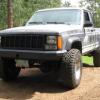Gearing Question For Clarification
Gearing Front to Rear
16 members have voted
-
1. What is the best set up for gears?
-
Front Pulling Rear with 4.09 front 4.11 rear0
-
Front Pulling Rear with 4.09 front and 4.10 rear1
-
Front Pulling Rear with 4.10 front and 4.11 rear2
-
Matched Ratios in 4.116
-
Rear Pushing front with 4.11 front and 4.10 rear0
-
Rear Pushing front with 4.11 front 4.09 Rear0
-
Rear Pushing front with 4.10 front and 4.09 rear0
-
Makes no difference9
-


Recommended Posts
Create an account or sign in to comment
You need to be a member in order to leave a comment
Create an account
Sign up for a new account in our community. It's easy!
Register a new accountSign in
Already have an account? Sign in here.
Sign In Now